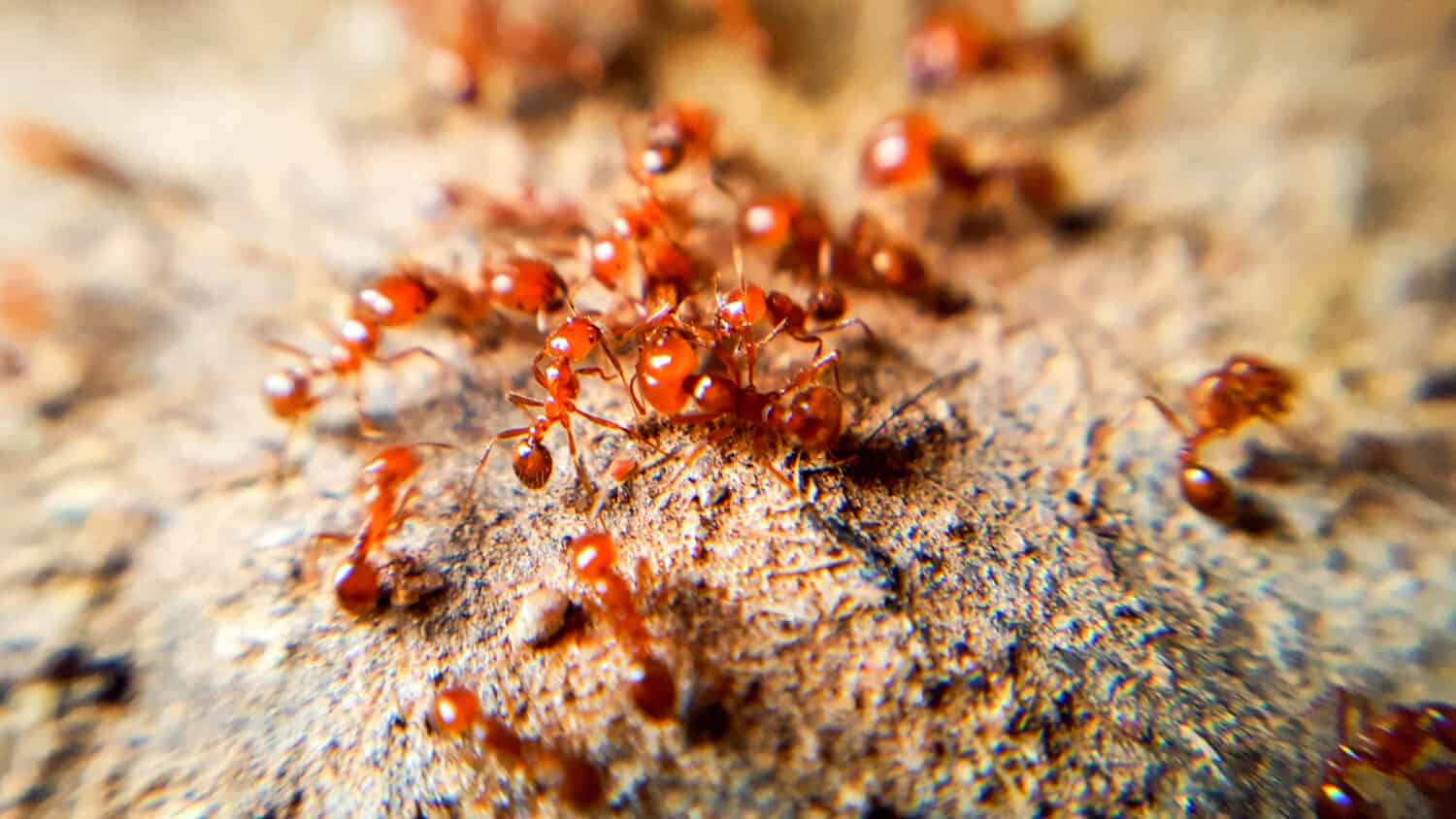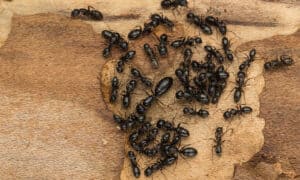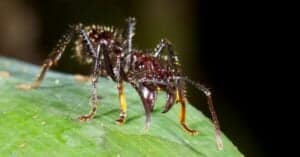Introduction
There are over 12,000 species of ants in the world! Because there are so many different species of ants, they are extremely prominent. These insects can be found everywhere, except for the content Antarctica. It is estimated that there are around 2,500,000 ants for every one human! Ants are social insects that live in large colonies with governing queens as well as workers. While colonies are large and contain thousands of ants, that doesn’t affect their communication. Ants communicate by secreting pheromones that others can interpret to find food or be warned of an oncoming threat. These insects may be interesting, but they can also be highly invasive. Over 500 species of ants have been found outside of their native countries, dealing damage to fragile ecosystems. In the United States, the red fire ant is an invasive species. Keep reading to learn all about fire ants and their bites.
Overview: Fire Ant

There are over 280 species of fire ant, but the most common in the United States is the red fire ant.
©AOKSANG STUDIO/Shutterstock.com
The fire ant, or genus Solenopsis, has become an invasive species in the United States. There are over 280 species of fire ant, but the most common in the United States is the red fire ant. These aggressive ants are difficult pests, and more dangerous than many other species of ants. Read on to discover everything there is to know about fire ants.
Appearance
Red fire ants are similar in appearance to many other species of ants. Workers measure between an eighth and a quarter of an inch in length and have three teeth at the front of their heads. There are no spines on these ants’ thoraxes, they instead have a smooth, glossy appearance. Fire ants have reddish bodies with a brown gaster.
Habitat

Fire ants build mounds by displacing soil and dirt as they burrow into the earth.
©Tracey Patterson/Shutterstock.com
Red fire ants are native to Brazil, Argentina, and other sections of South America. However, these ants have been documented in the United States as early as 1984. Fire ants first appeared in the United States at a border station in California, and have since spread to many southern states and even Puerto Rico.
These ants typically build nests in the soil near a water source. Their nests have multiple openings and can reach up to two feet in width. In addition to being extremely wide, these nests are often a foot and a half tall. Fire ants build these mounds by displacing soil and dirt as they burrow into the earth. Underneath these mounds, fire ants build tunnels extending 25 feet in length. While it may seem like the majority of the population lives in the visible mound, that is not the case. Fire ants use the tunnels to access food, build nurseries for their young, and travel to different locations in the colony without being spotted by predators. Pouring boiling water into the mound or drenching it with a pesticide are effective ways to eliminate fire ant colonies.
Behavior
Red fire ants are known for being extremely aggressive. When in danger, these ants will swarm their victim and sting them until the threat is neutralized. This defense tactic is unique to the fire ant species. Similar to when they are defending themselves, fire ants search for food in groups. These ants travel in trails guided by scent to food and water sources and can lift objects up to 20 times their body weight. Red fire ants can also fly, and do so in order to mate and attack their prey.
Fire Ant Bites

Fire ant bites typically occur on the victim’s feet and legs.
©Arlee.P/Shutterstock.com
Red fire ants are known for their painful bite. These ants inject venom into their victims when they bite them, causing a stinging sensation. While these bites usually heal after several days, they can sometimes be fatal. Victims of fire ant bites can experience nausea, vomiting, and in extreme cases, anaphylaxis. Keep reading to learn how to identify and treat a bite from a fire ant.
Identifying the Bite
Fire ant bites typically occur on the victim’s feet and legs. However, these ants can swarm humans and bite them anywhere on their bodies. After an initial burning sensation, a bum will form. This welt will slowly develop into a blister after several hours. A day later, the blister will fill with a yellowish-white fluid. After seven to ten days, the bite will usually heal on its own.
Treating the Bite
Fire ant bites will typically go away after some time, but treating them and easing the discomfort can be helpful. Washing the affected area with soap and cold water will prevent infection. In addition to washing, taking an antihistamine can help reduce itchiness. In more severe cases, it is advisable to seek medical attention to ensure that the bite is not infected or the victim is not having an allergic reaction.
The photo featured at the top of this post is © Yuphayao Pooh's/Shutterstock.com
Thank you for reading! Have some feedback for us? Contact the AZ Animals editorial team.







